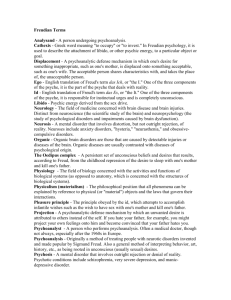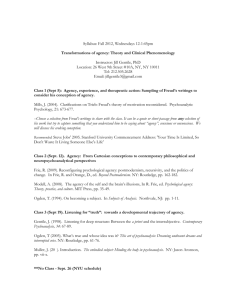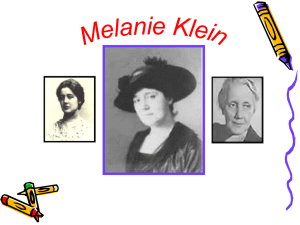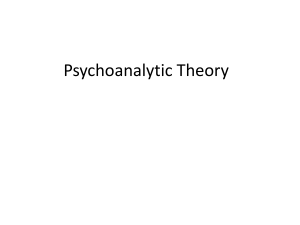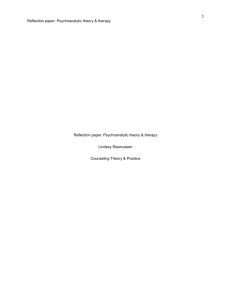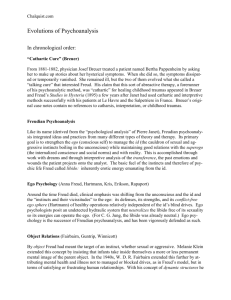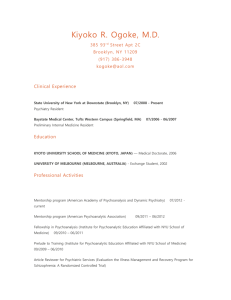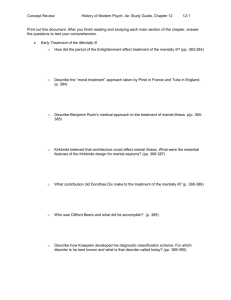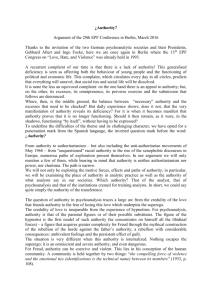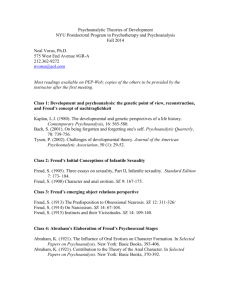Abstracts EACD Panel Neuropsychoanalyse
advertisement
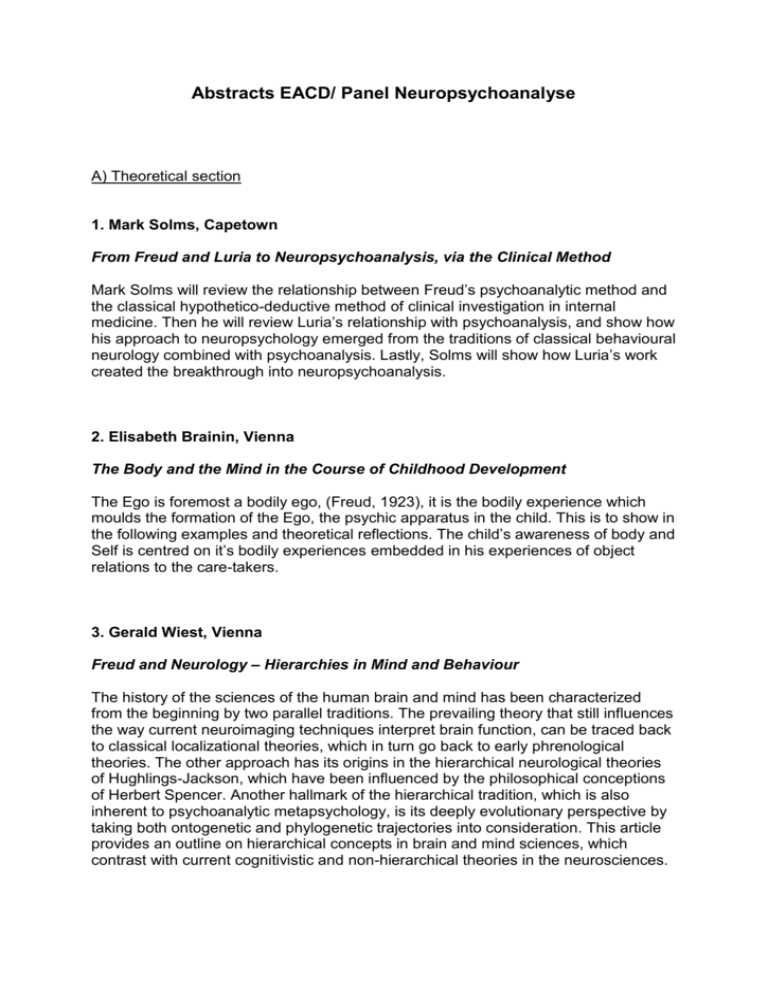
Abstracts EACD/ Panel Neuropsychoanalyse A) Theoretical section 1. Mark Solms, Capetown From Freud and Luria to Neuropsychoanalysis, via the Clinical Method Mark Solms will review the relationship between Freud’s psychoanalytic method and the classical hypothetico-deductive method of clinical investigation in internal medicine. Then he will review Luria’s relationship with psychoanalysis, and show how his approach to neuropsychology emerged from the traditions of classical behavioural neurology combined with psychoanalysis. Lastly, Solms will show how Luria’s work created the breakthrough into neuropsychoanalysis. 2. Elisabeth Brainin, Vienna The Body and the Mind in the Course of Childhood Development The Ego is foremost a bodily ego, (Freud, 1923), it is the bodily experience which moulds the formation of the Ego, the psychic apparatus in the child. This is to show in the following examples and theoretical reflections. The child’s awareness of body and Self is centred on it’s bodily experiences embedded in his experiences of object relations to the care-takers. 3. Gerald Wiest, Vienna Freud and Neurology – Hierarchies in Mind and Behaviour The history of the sciences of the human brain and mind has been characterized from the beginning by two parallel traditions. The prevailing theory that still influences the way current neuroimaging techniques interpret brain function, can be traced back to classical localizational theories, which in turn go back to early phrenological theories. The other approach has its origins in the hierarchical neurological theories of Hughlings-Jackson, which have been influenced by the philosophical conceptions of Herbert Spencer. Another hallmark of the hierarchical tradition, which is also inherent to psychoanalytic metapsychology, is its deeply evolutionary perspective by taking both ontogenetic and phylogenetic trajectories into consideration. This article provides an outline on hierarchical concepts in brain and mind sciences, which contrast with current cognitivistic and non-hierarchical theories in the neurosciences. B) Clinical section 4. Zsofia Kovacs, Vienna „Alone and without nobody“– loss of „Self“ Psychoanalysis of a boy after TBI The inner world of the neurological patient is the topic of psychoanalysis. What happens, when the patient fails to “recognize” himself and also his objects? What is the dynamic background of this phenomenon? This talk covers the first months of the patient’s recovery in a hospital setting and throws light on the development of psychic/mental structures during psychoanalysis. It shows how unconscious processes “exploit” body and mind and how their understanding and interpretation enhances the general rehabilitation process. The clinical process has a sound theoretical fundament based on Freudian psychoanalysis and its development by Luria towards today’s neuropsychoanalysis. It shows how important it is to overcome a symptom-oriented approach in neurorehabilitation by listening to the other side: the patient’s subjectivity. It paves the way for real interdisciplinarity of cognition, emotion and behaviour considering conscious and also unconscious aspects. 5. Kobi Tiberg, Tel Aviv Confabulating in memory and perception: Reality and fantasy following brain damage Confabulations are false memories produced without conscious knowledge of their falsehood and are frequently associated with prefrontal brain damage. Traditional neuropsychological explanations of confabulation attribute these symptoms to cognitive deficits such as impaired control of memory retrieval or impaired temporality. However, recent studies demonstrate that confabulations are biased by motivational and emotional factors, and suggest that impairment in retrieval control and inhibition due to prefrontal damage may generate excessive influence of emotion on memory. In a neuro-psychoanalytic framework some cases of confabulation due to prefrontal damage seem to represent a shift from 'reality principle' to 'pleasure principle' ways of thinking. This process will be demonstrated in the paper with examples from clinical and neuropsychological testing material. I will further suggest that the process of replacing objective material with subjective experience can also be seen in the domain of visual perception, in patients with right hemisphere perisylvian damage. This will be demonstrated with examples of ways in which these patients perceive and interpret Thematic Apperception Test (TAT) pictures, and explained according to Solms's theory of narcissistic regression following right perisylvian damage. Finally, I will suggest ways of working with confabulatory patients in psychotherapy, based on integrative, neuropsychoanalytic understanding of their symptoms. 6. Gabriele Wesenauer, Vienna On development within psychoanalytic progress - being seen and seeing, being heard and hearing In this paper I would like to consider aspects of how psychoanalytic theory can contribute to the endeavours in the area of psychotherapeutic work with multihandicapped children, based on case vignettes. Understanding within a protective analytic relationship represents a specific way of trying to change disturbing, unconscious psychic dynamics - and in trying to help in the treatment of even those children with severe disabilities.

